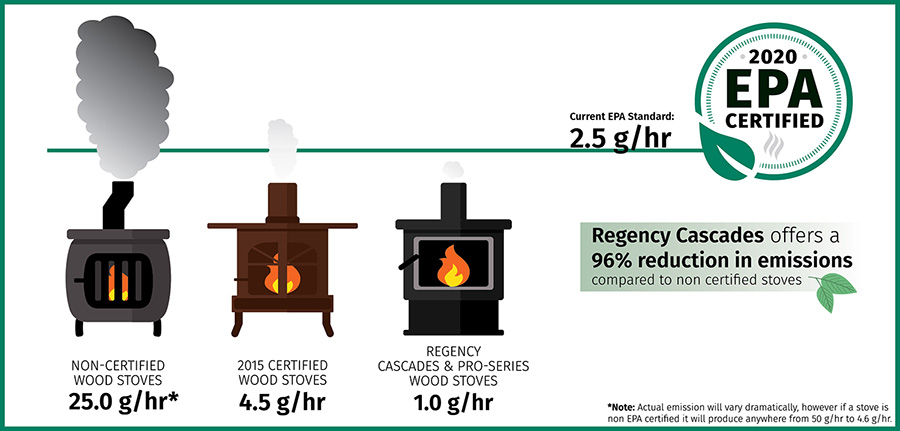We all know by now that ground-level ozone can be harmful to us and the environment. Therefore, you ought to wonder, is anything being done to mitigate the air pollution issues of the national parks in the U.S? And if so, how effective are they? Let’s take a look and find out!
The Clean Air Act
The battle against air pollution in the U.S. revolves around control strategies that are developed by state governments, where state implementation plans are submitted and approved by the Environmental Protection Agency (EPA). The EPA is therefore responsible for ensuring that the law of the Clean Air Act (CAA) is obeyed.
The CAA is the comprehensive federal law that regulates air emissions from stationary and mobile sources. Since 1970, its implementation and technological advancements have dramatically improved air quality in the U.S. The CAA also authorizes the EPA to establish National Ambient Air Quality Standards (NAAQS) for ozone and five other pollutants that are considered harmful to public health and the environment. Hence, the EPA will have to periodically review the standards through various processes, to ensure that adequate health and environmental protection is provided. More information on the process of reviewing the NAAQS can be found here.
Areas in the U.S. that do not meet the NAAQS are identified as Nonattainment Areas, and state, local and tribal agencies involved must therefore develop plans to reduce air pollution and attain the NAAQS. An example of such an area is the San Joaquin Valley, California, which is regarded as one of the most polluted areas in the nation where residents are frequently exposed to unsafe air due to the vehicles and the agriculture industry. As a result, parks in neighbouring states, like Sequoia and Kings Canyon Park, suffers from air pollution due to the pollution in San Joaquin Valley, despite being several hundred miles away.
The city of Orange Cove in San Joaquin Valley, California, covered in smog. Photo by John Walker
There are many examples of the different ways in which the EPA monitors compliance of regulated operations pursuant to the CAA. For instance, the EPA’s Clean Air Act Mobile Sources Program ensures that vehicles and engines used in the U.S. are manufactured under the terms of an emission certificate of conformity issued by the EPA. Another example is the Wood Heater Compliance Monitoring Program, which ensures that residential wood heaters comply with applicable emission standards, by having manufacturers to participate in an EPA certification program and testing at an EPA accredited laboratory.

Regency Cascades, an example of an EPA certified wood stove. Graphics from Regency Fireplace Products
Has Air Quality Improved Over The Years?
According to the annual report, Our Nation’s Air, that summarizes the nation’s air quality status and trends, there have been significant improvements in the air quality in the U.S. across different categories. This one-page flyer is a good summary of the entire report, but I will still highlight the more significant ones below.
Furthermore, there has also been an improvement in air quality in the nonattainment areas over the years, as seen in the interactive maps here. Sullivan et al., (2018) also concluded that air pollution in the U.S. has decreased in response to policy informed by monitoring and research, which in turn provide environmental, social and economic benefits.
Till next time,
Irsyad
——————
References:
2019. Our Nation’s Air 2019. Our Nation’s Air. [online] United States Environmental Protection Agency. Available at: <https://gispub.epa.gov/air/trendsreport/2019/#nonattainment_areas>
National Parks Conservation Association, 2019. Polluted Parks: How America Is Failing To Protect Our National Parks, People And Planet From Air Pollution. [online] National Parks Conservation Association, pp.5-10. Available at: <https://npca.s3.amazonaws.com/documents/NPCAParksReport2019.pdf>
Sullivan, T., Driscoll, C., Beier, C., Burtraw, D., Fernandez, I., Galloway, J., Gay, D., Goodale, C., Likens, G., Lovett, G. and Watmough, S., 2018. Air pollution success stories in the United States: The value of long-term observations. Environmental Science & Policy, 84, pp.69-73.
US EPA. n.d. Managing Air Quality – Control Strategies To Achieve Air Pollution Reduction. [online] Available at: <https://www.epa.gov/air-quality-management-process/managing-air-quality-control-strategies-achieve-air-pollution#:~:text=In%20the%20United%20States%2C%20control,submitted%20and%20approved%20by%20EPA.>
US EPA. n.d. Summary Of The Clean Air Act. [online] Available at: <https://www.epa.gov/laws-regulations/summary-clean-air-act>

